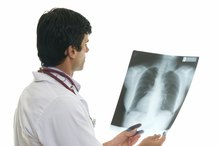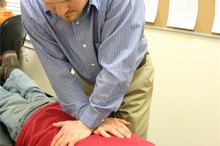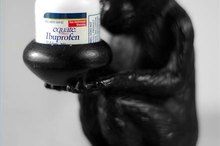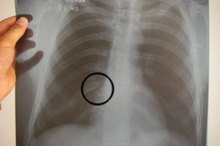Pain Relief for Cracked Ribs
Cracked, broken and bruised ribs are painful injuries. Adding inconvenience to injury is the fact that they are tricky to treat. While you can put a broken arm in a splint or a cast, the torso is just too big for that sort of treatment.
Most patients with a cracked rib are told to take it easy and wait for it to heal. Meanwhile, there are some tricks to help ease the pain.
Over the Counter Pain Medication
Many victims of a cracked rib get prescription pain relief.
If you don't, or you prefer not to take them, simple over-the-counter pain medicine can still help a lot. Aspirin (Bayer), ibuprofen (Advil) and acetaminophen (Tylenol) are the most common. Unless you suffer from an allergy, most are just about as effective as one another.
**If you're in a lot of pain, one trick is to alternate doses of two different kinds of pain meds.
You should wait four hours between doses of any one kind of pain medication, but you can for example take ibuprofen two hours after your aspirin, and then more ibuprofen two hours after that. You should still be careful to observe any warnings on the label about maximum dosage. ** Also, never do this if you're taking prescription meds as they can interact in unpredictable and dangerous ways.
Finally, there is some concern about using aspirin on children under the age of 20. Ask your pediatrician before doing so.
- Many victims of a cracked rib get prescription pain relief.
- You should wait four hours between doses of any one kind of pain medication, but you can for example take ibuprofen two hours after your aspirin, and then more ibuprofen two hours after that.
Compression and Immobilizing
How to Tape Cracked Ribs
Learn More
Cracked ribs hurt so much and so often because we keep moving them 1. Every time you turn, bend or breathe, the ribs twist and bend. You can wrap your ribs with a compression bandage, or even a tight t-shirt to immobilize the cracked rib. This will help to minimize the twisting and bending and do a lot to make you more comfortable.
Another method for immobilization is simple good posture. Sitting up straight and rotating your entire torso as a unit will take a lot of stress off the rib cage. This will minimize that twisting and bending, and reduce your pain substantially 1.
When at rest, some people find it helps to hug a pillow or cushion to the damaged side of your body. This is another form of compression, and especially useful when you try to sleep.
- Cracked ribs hurt so much and so often because we keep moving them 1.
- When at rest, some people find it helps to hug a pillow or cushion to the damaged side of your body.
Ice, Ice Baby
Ice will reduce swelling and help numb the damaged area.
Especially during the first 48 hours, icing your ribs will help ease the pain and speed healing 1. The best ice pack is a bag of frozen peas: it's cold enough, and it will shift to mold around your torso.
When icing, keep a thin towel between the ice and your skin to prevent damage. Keep the ice on for 30 minutes at a time, resting an hour in between to encourage blood flow.
- Ice will reduce swelling and help numb the damaged area.
- When icing, keep a thin towel between the ice and your skin to prevent damage.
Take it Easy
How to Sleep With a Broken Rib
Learn More
Moving your body generally involves moving your ribs.
Moving your ribs hurts and makes them take longer to heal. Avoid strenuous exercise and difficult postures, even things like reaching to high shelves, as much as you can. You need to keep your ribs in a condition to heal quickly.
Finally, resist the temptation to ramp up your level of exertion because you 'feel a little better.' There are few quicker ways to get re-injured than to start pushing hard before your body is ready for it.
- Moving your body generally involves moving your ribs.
- You need to keep your ribs in a condition to heal quickly.
Related Articles
References
- American Kickboxing Institute Trainer's Manual, by William Packer
Writer Bio
Jason Brick has written professionally since 1994. His work has appeared in numerous venues including "Hand Held Crime" and "Black Belt Magazine." He has completed hundreds of technical and business articles, and came to full-time writing after a long career teaching martial arts. Brick received a Bachelor of Arts in psychology from the University of Oregon.









